|
Ghosts and Gastronomy
in
Canada's smallest Province:
...Allan Parry and Jim Fraser explore a bit of Prince Edward Island |
|
"I was alone in the
house" said
the lady dressed in the period costume of 1860,
"when a cold wind
blew down the chimney and a door slammed." Out of
the kitchen
window I could see a fully rigged sailing ship on the
lawn. The house
was half a mile from the sea. "A young man stood beside
me and asked if
he could look around the house. I offered to show
him but he said
that he could find his own way. I never saw him or the
ship again." A
chill ran down my back. Many men and ships had been lost
in this area.
We considered rigging Naomi
with
full sail and towing her slowly across
the lawn at dusk but adjudged this to be politically
incorrect.
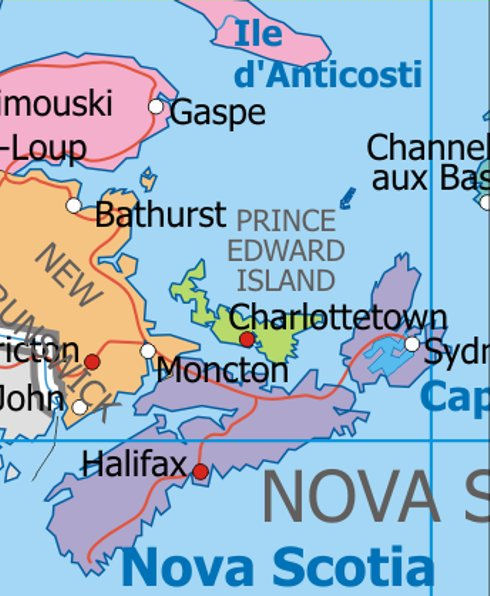 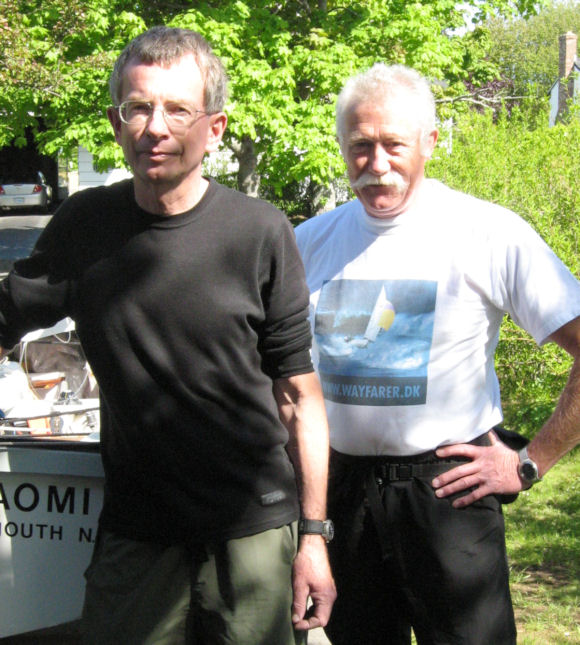 Jim Fraser (above left) and I
were on a cruise in Prince Edward Island (PEI) and
were visiting the Green Park Shipbuilding Museum in
Malpeque Bay. In
the mid 1800's, over 300 ships were built here and
sailed to Great
Britain with cargoes of wood. Health and Safety was not
the first
priority.
ii
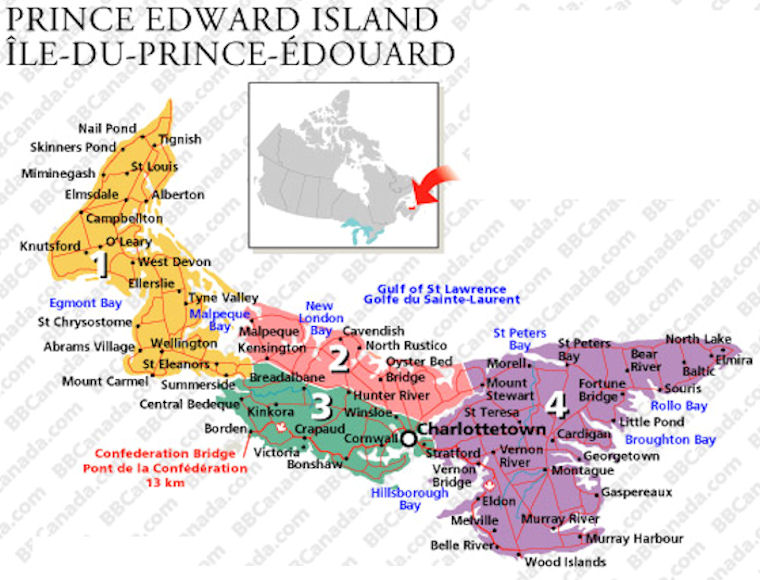 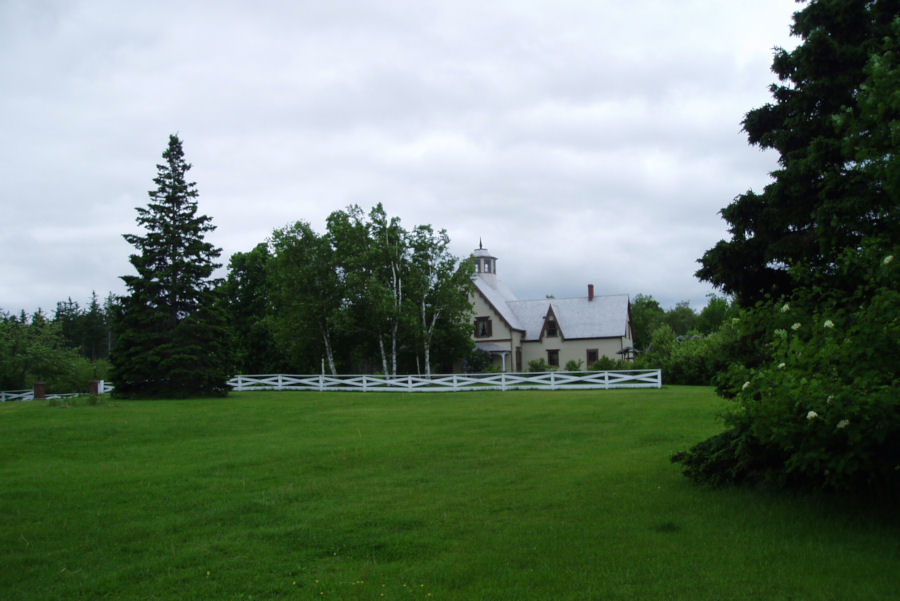 Yeo
homestead, Green Park. The shipbuilding
museum was based around
the house of
James Yeo from Devon one of the successful shipbuilders of that era. 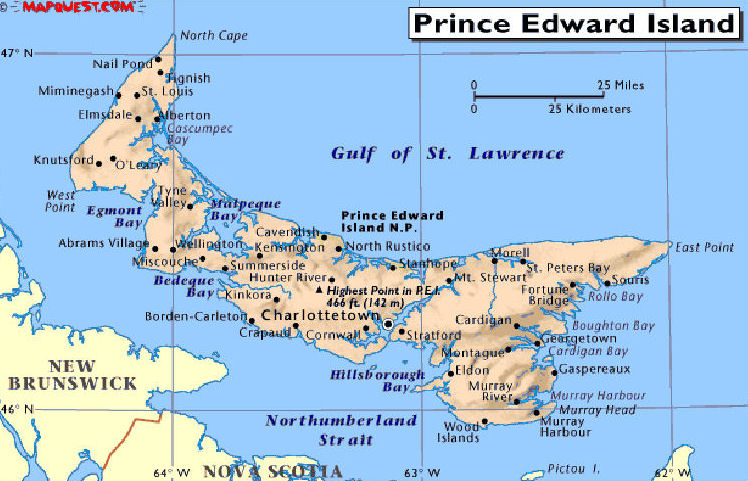 PEI is 170 miles long by
50
miles wide and looks like a superb Wayfarer
sailing area.
It is a quite low-lying sandy island with many huge bays often protected by barrier beaches. 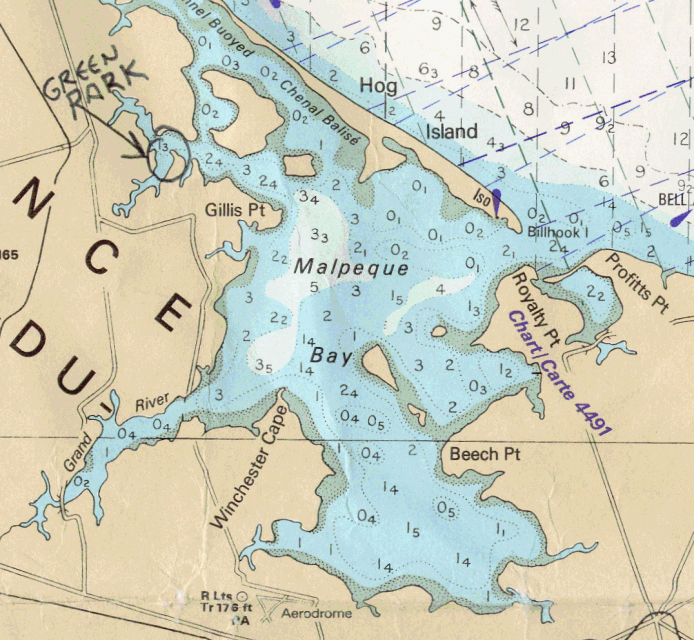 Malpeque Bay is 10 miles
by 5
miles and is famous for oysters and other
shellfish.
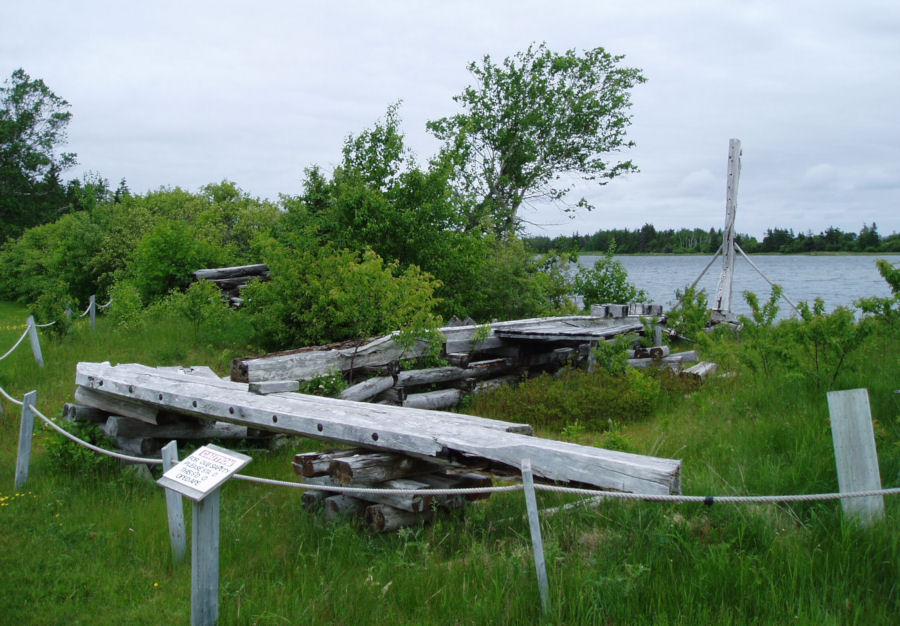 Remains of the shipyard, Green Park 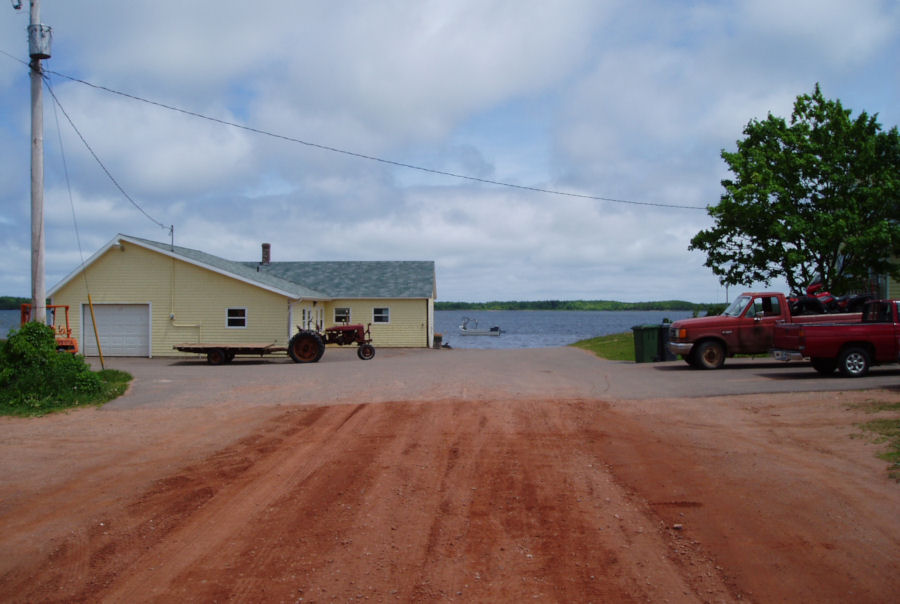 Malpeque Bay, the ... 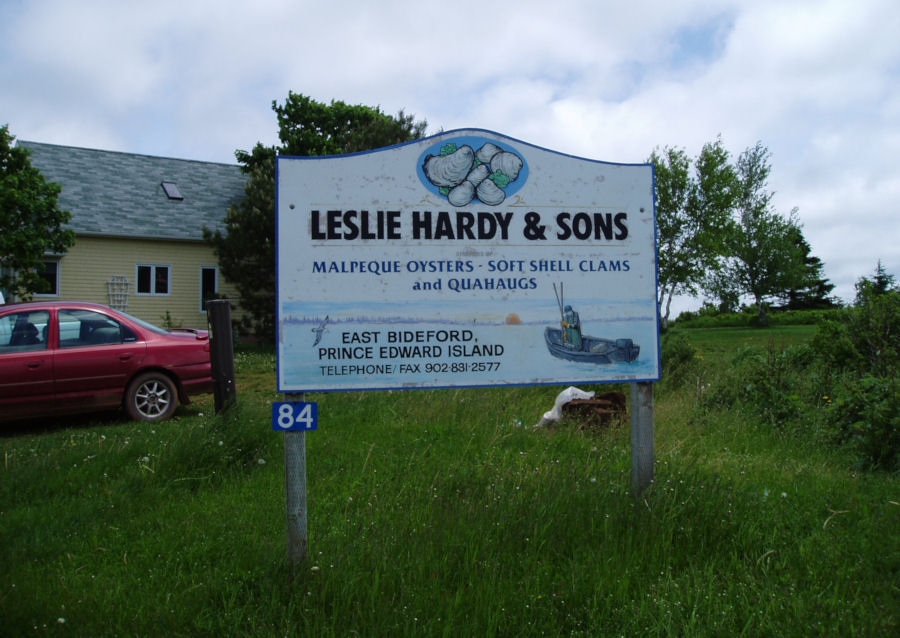 ... shellfish plant We visited the shellfish
museum
in Bideford (yes, we actually did sail
the boat on occasions!) and were given freshly opened
oysters to try -
delicious! I must say the Canadians do museums
well. The lady
there didn't have any shellfish related ghost stories
but did tell us
where we could buy oysters and clams if we didn't want
to dig them for
ourselves.
It has become one of my aims in life to increase Jim Fraser's interest in food. Jim's idea of a Wayfarer cruising breakfast had been to eat cold sardines out of the tin. We have now progressed to Aunt Jemima's pancakes, bacon and fried potatoes. Jim has even become our AJ's expert. I know how proud Jamie Oliver must feel! We wanted to try our own
oysters and quahogs (a sort of giant clam - no
not the sort that divers get their boots stuck in -
somewhere
in-between). Following the lady's directions (it's a
good job we did,
as there were
no signs) we arrived at the shellfish factory. A big dog
approached the
car. "You get out and speak to it in Canadian," I said.
It was quite
friendly really. We entered the factory. Bods in rubber
gear stood
around amid piles of shellfish and eyed us suspiciously.
Presumably we
looked like Government Shellfish Inspectors.
"Do you sell oysters?" we asked brightly. "What sort do you want?" the head bod asked. This stumped us. Obviously a GSI would know the answer to this trick question so we were revealed as bona fide buyers and they became very helpful. The lady told us that the Russians eat them raw with a slug of vodka poured on. We left with a box of medium-sized oysters and diver-sized quahogs. We did pass a liquor store on the way back to camp but thought the vodka method a bit extreme, even for us. Back at camp (yes, we did camp) we prepared the chilled chardonnay and considered how to open the oysters. We had watched the lady in the museum do it and it looked rather dangerous. Eschewing shucking we decided on the heat method. We chucked them into a pan of boiling chardonnay and they obligingly opened for us. They were nice fried with bacon and potatoes. The boot-sized quahogs were as tough as boots but tasted good. Apparently they are normally minced and made into clam chowder. 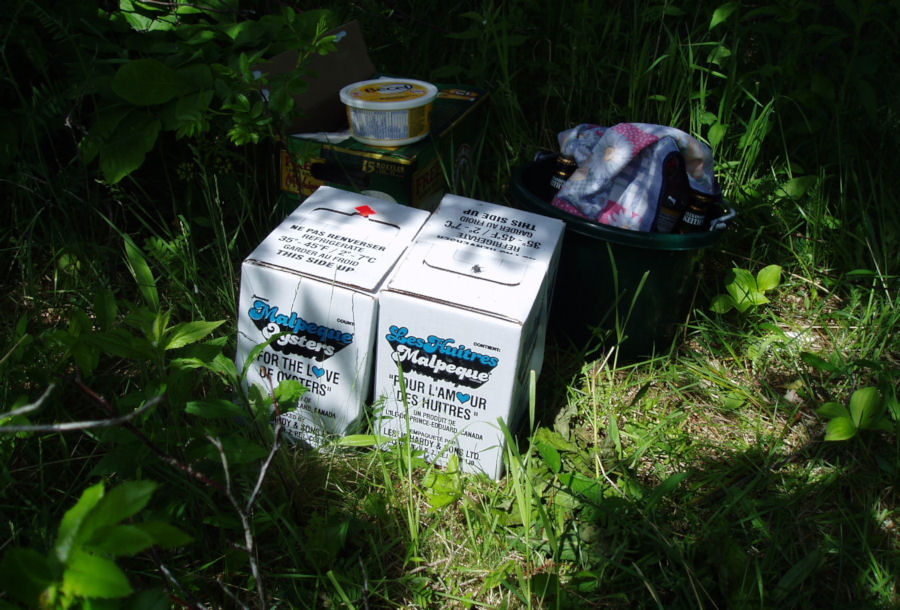 Says Jim: "My Cape Breton co-workers would consider this a full-course shellfish supper as is." 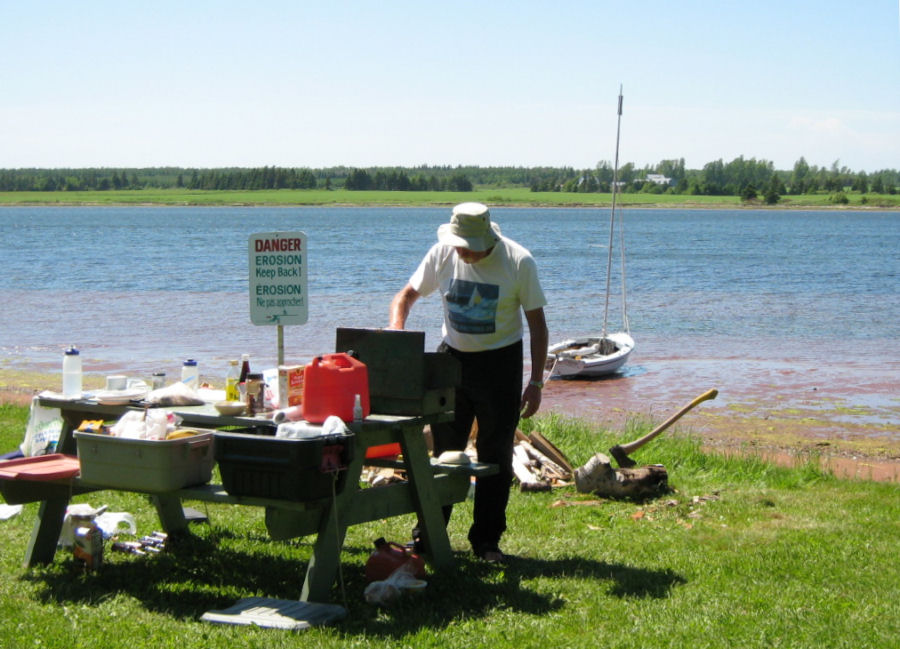 Allan, the Master Chef prepares ... 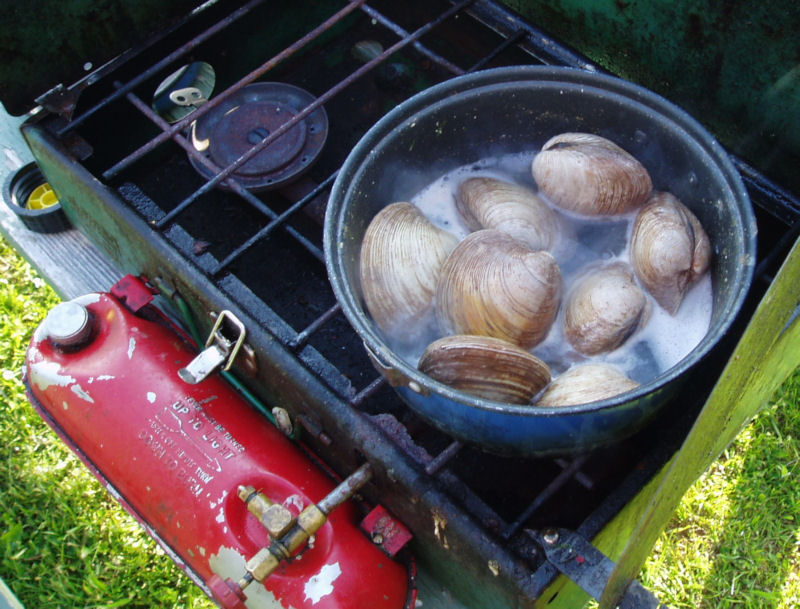 ... an exotic ... 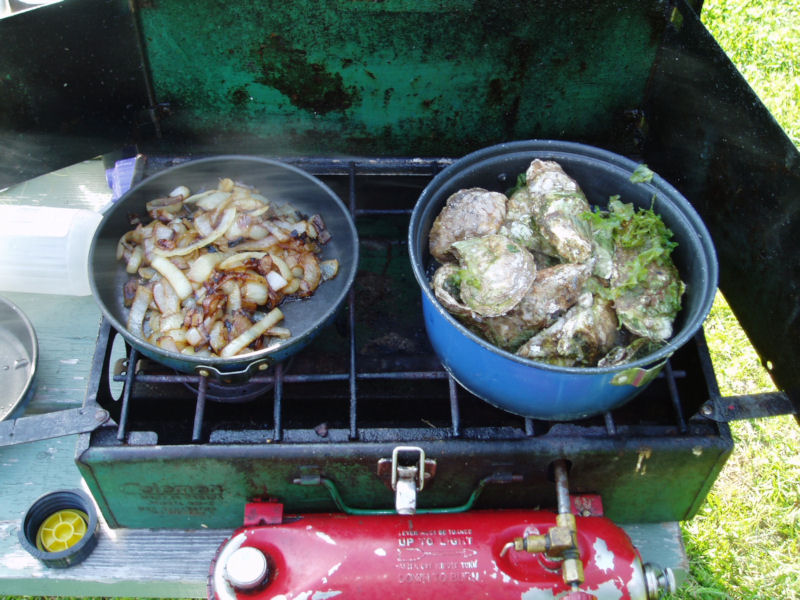 ... meal. 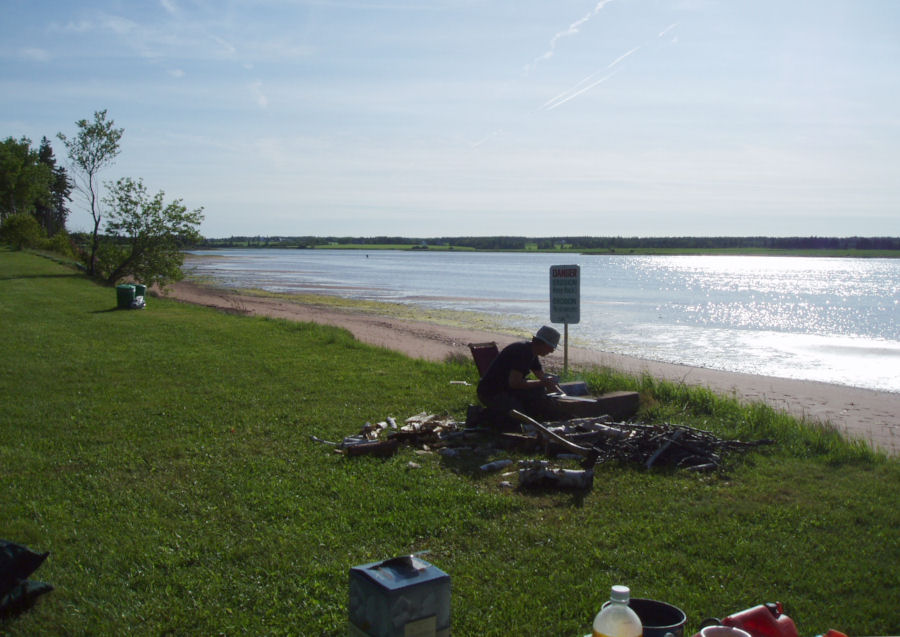 Savouring our meal, surrounded by "all our guests" 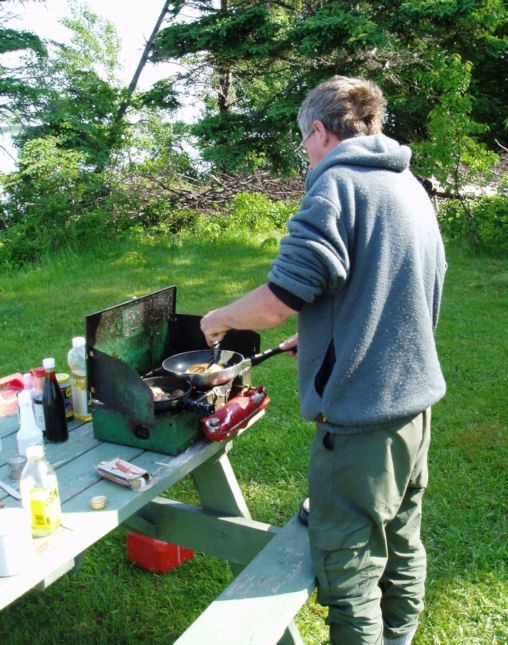 Back to pancakes and bacon in the morning; maybe for my go as Master Chef tonight, I'll make us both a bowl of oatmeal and open two cans of sardines. 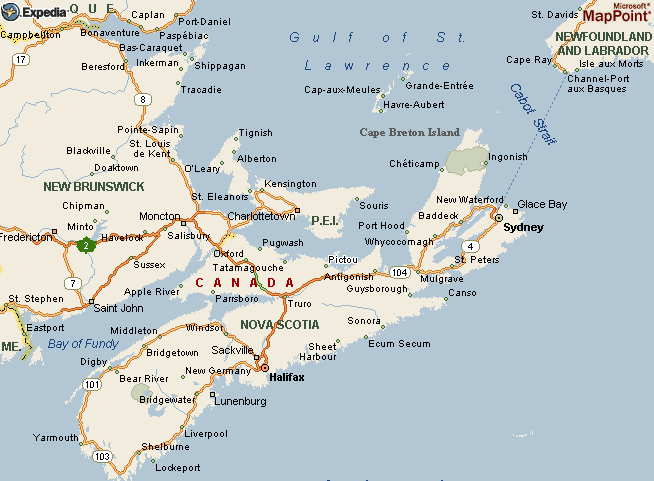 Our cruise had started
with a
drive from Jim's home, in Dartmouth, Nova
Scotia (near Halifax),
to Pictou on the north coast of the Province. 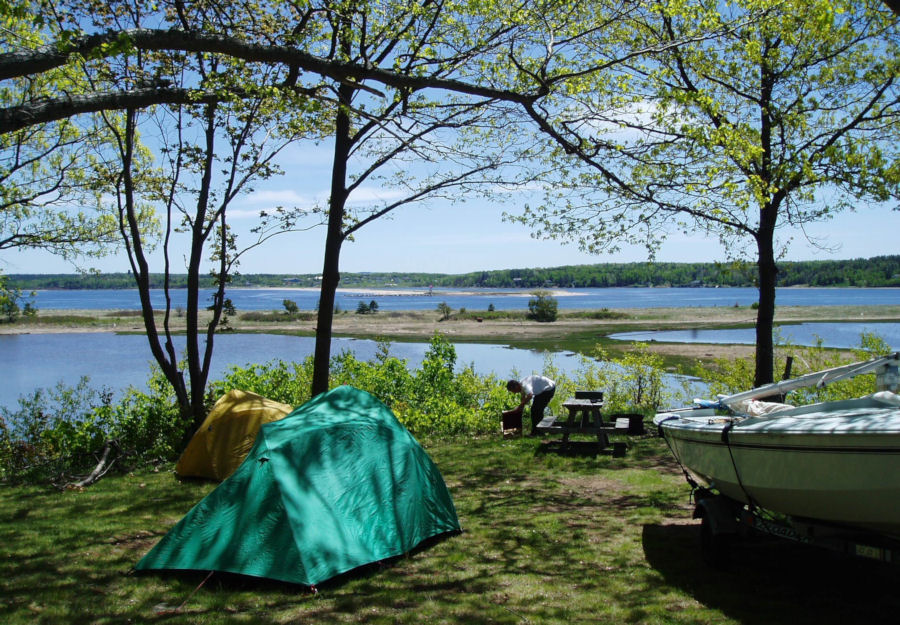 Pictou: Campsite overlooking the Narrows 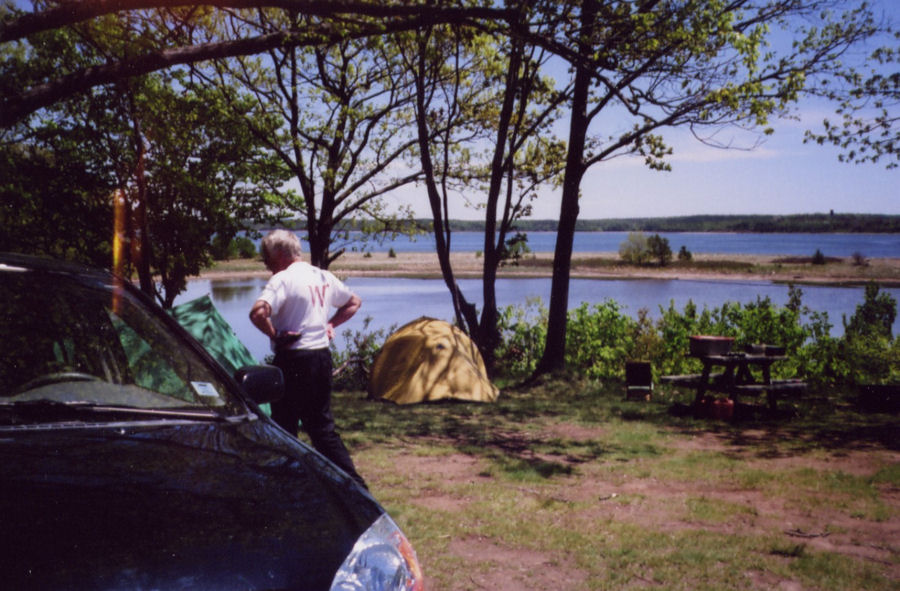 Pictou Harbour Approaches We camped at a
small campground and launched Naomi
at a launch ramp into Pictou
harbour. It was a good opportunity for a shakedown
cruise - Canada's
sailing season had only just started - it was the 10th
June. The north
shore of Nova Scotia is in the outer Gulf of Saint
Lawrence
and has much different weather from the Eastern Shore,
which is in the
Atlantic. The water is warmer and there is hardly
any fog. We
listened to the forecast on VHF, the Eastern Shore was
socked in with
fog - just as we had been last year. This year's cruise
was to be in
PEI and we needed to make our way to
the ferry. The weather was deteriorating but we
wanted a last
sail in Nova Scotia.
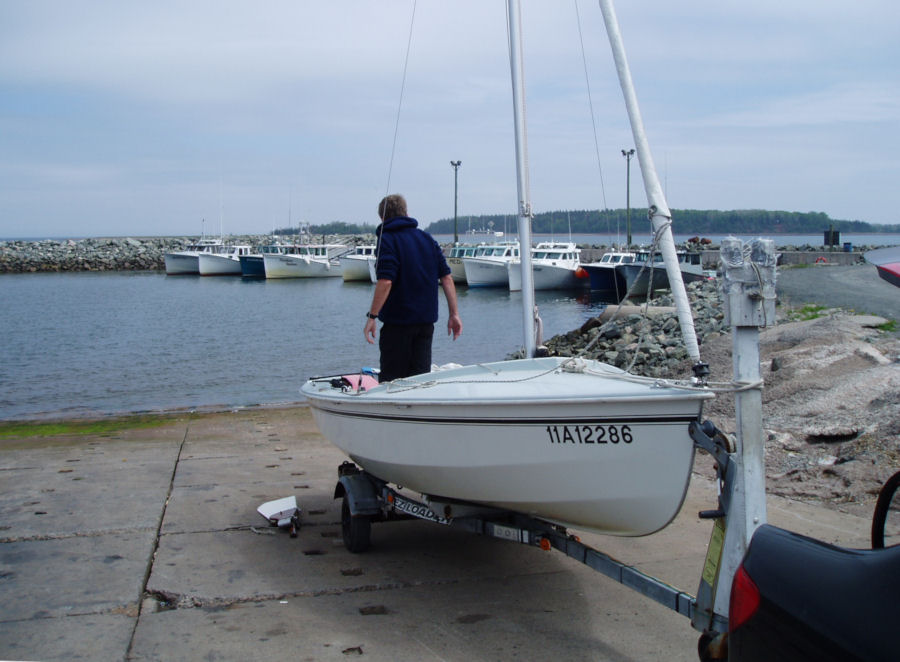 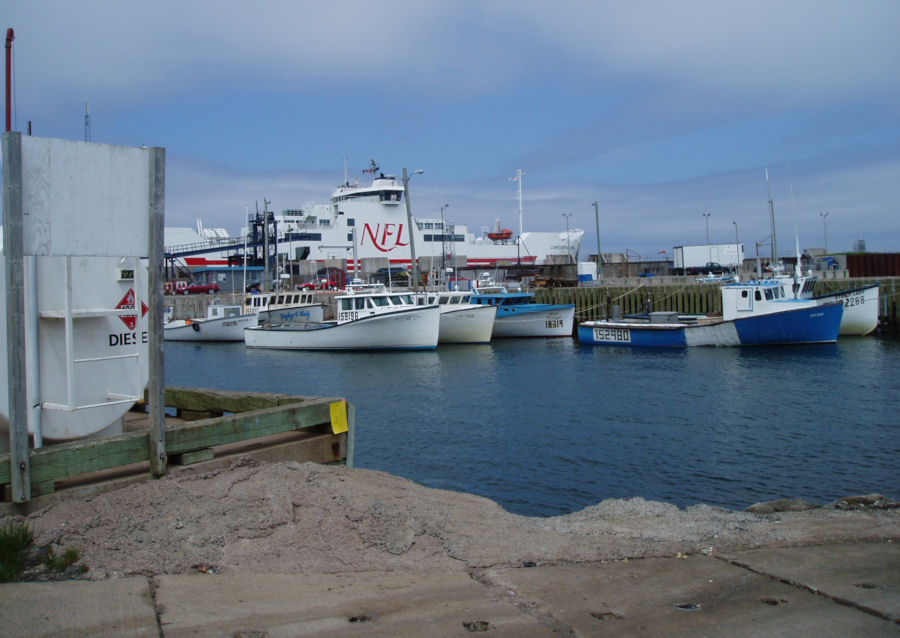 The launch ramp near the ferry terminal gave us access to Caribou Bay. 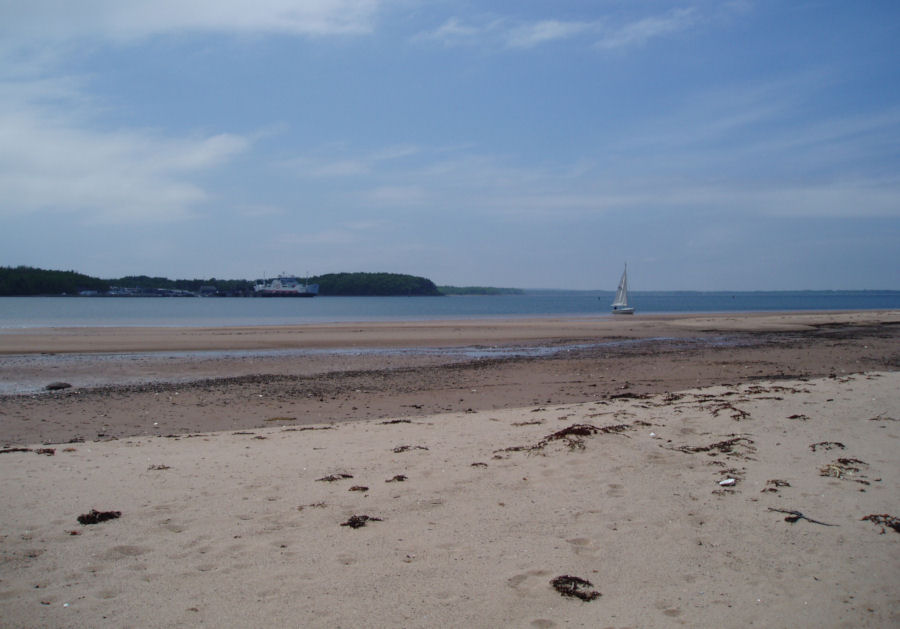 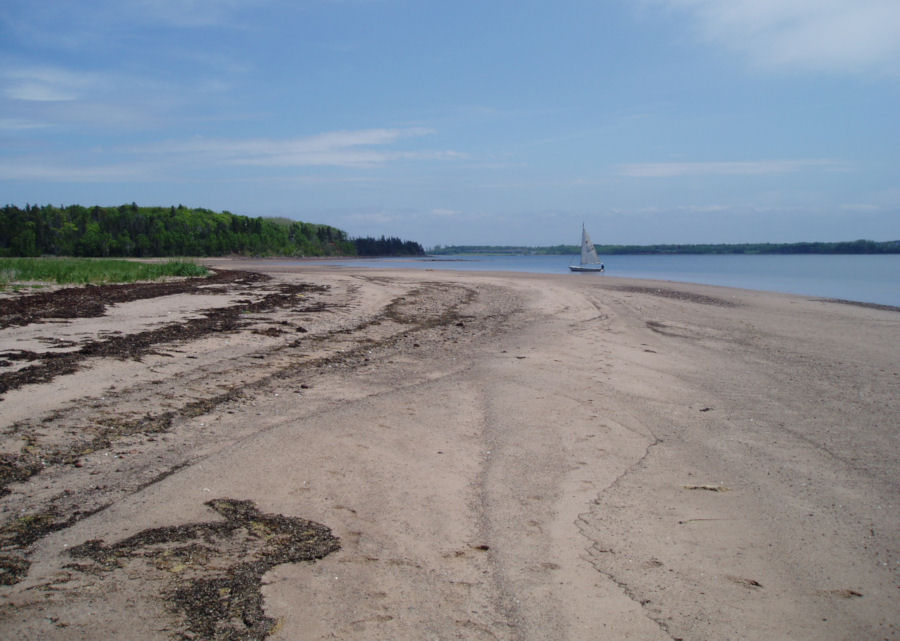 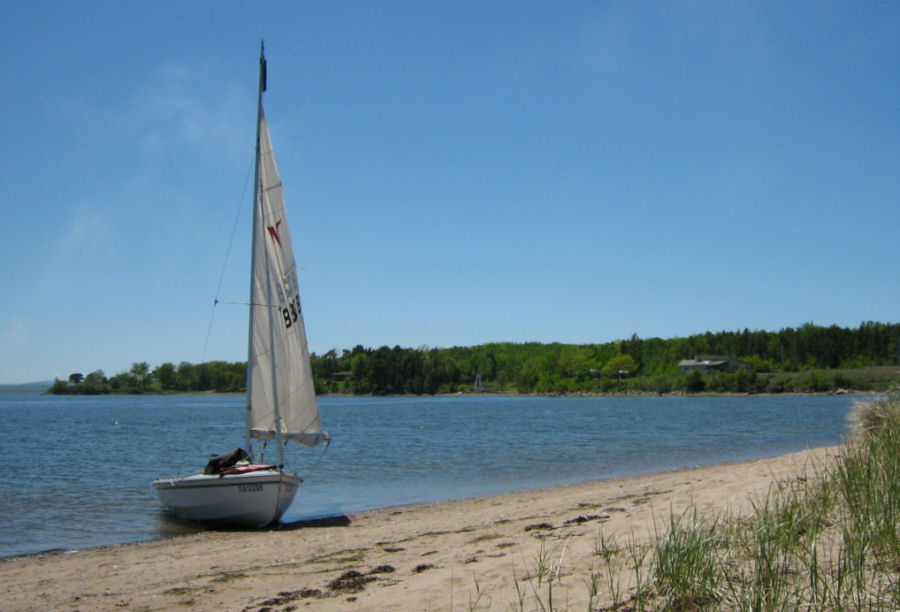 Pictou Harbour from the ...  ... narrows at Pictou Roads 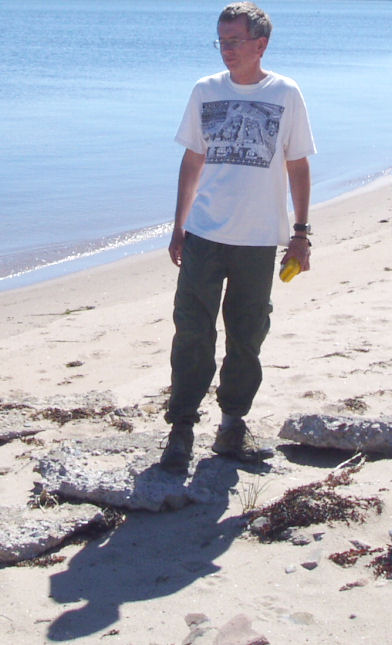 Jim Fraser We sailed around,
thrilling the
lobster
fishermen, and had lunch on a lonely sand spit in
company with a deer.
It was windy. Next day it poured with rain, the
conditions you dread
when breaking
camp. Stuffing everything into the car and boat we
headed for the
ferry. We were allocated the upper deck and had to climb
a steep ramp
of polished lattice steel. Jim's car was nearly sideways
with the
wheels spinning as he hauled Naomi,
filled with wet camping gear, to
the top. For once we envied our fellow travellers in
their giant 4x4's.
... |
| Ghosts and Gastronomy in
Canada's smallest Province - part two |